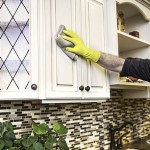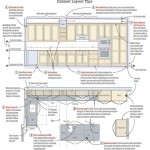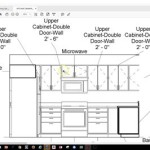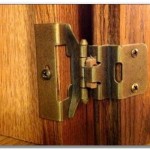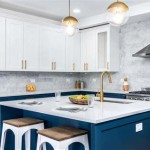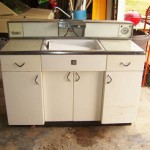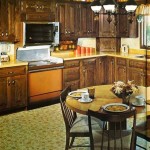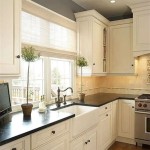Photo of Kitchen Cabinets: A Guide to Understanding and Choosing the Right Style
Kitchen cabinets are a crucial element in any kitchen design, providing both functionality and aesthetic appeal. When searching for inspiration or planning a kitchen remodel, encountering a “Photo of Kitchen Cabinets” online can be a powerful starting point. These images offer a glimpse into various styles, materials, and configurations, helping homeowners visualize potential options for their own space. Understanding the key components of a kitchen cabinet photo can empower individuals to make informed decisions about their desired style and functionality.
Cabinet Styles: From Traditional to Modern
Kitchen cabinet styles encompass a wide range of aesthetics, each capable of influencing the overall ambiance of the space. A “Photo of Kitchen Cabinets” will often showcase the predominant style. Some common styles include:
- Traditional: Characterized by ornate details, raised panels, and often featuring warm wood tones. Traditional cabinets exude a timeless elegance and are well-suited for classic or farmhouse-inspired kitchens.
- Contemporary: Known for clean lines, minimalist details, and often incorporating sleek materials like stainless steel or lacquered finishes. Contemporary cabinets create a modern and sophisticated feel.
- Transitional: Bridges the gap between traditional and contemporary styles. Transitional cabinets often feature simple lines and muted colors while incorporating subtle detailing elements.
- Shaker: A popular style characterized by simple, rectangular doors with a recessed center panel. Shaker cabinets offer clean lines and versatility, making them suitable for various kitchen design schemes.
The style of the cabinets should complement not only the overall home design but also the specific architecture and features of the kitchen. Carefully examining the style displayed in a “Photo of Kitchen Cabinets” provides a visual reference for determining whether it aligns with personal aesthetic preferences.
Cabinet Materials: Durability and Aesthetics
A “Photo of Kitchen Cabinets” can provide valuable insights into the materials used. The choice of material significantly impacts both the durability and appearance of the cabinets. Common cabinet materials include:
- Wood: Known for its natural beauty, durability, and warmth. Popular wood choices include cherry, oak, maple, and walnut, each with unique grain patterns and color variations.
- Laminate: An affordable and durable option that offers a wide range of colors and patterns. Laminate is a good choice for high-traffic areas and can be a cost-effective alternative to wood.
- Thermofoil: A type of laminate that is applied to a substrate using heat and pressure. Thermofoil cabinets have a smooth, consistent finish that is easy to clean.
- Painted: Cabinets can be painted in a variety of colors to achieve a desired look. Painted cabinets offer a versatile option for creating a customized aesthetic.
The material displayed in a "Photo of Kitchen Cabinets" can inspire ideas for the desired finish and overall aesthetic. Understanding the pros and cons of each material allows homeowners to make an informed decision based on their budget, desired look, and individual preferences regarding maintenance needs.
Cabinet Functionality: Layout and Features
The functionality of kitchen cabinets goes beyond just storing items. A “Photo of Kitchen Cabinets” can offer insights into various layout and features designed to enhance usability. Factors to consider when examining the functionality include:
- Cabinet Layout: The arrangement of upper and lower cabinets, as well as the inclusion of islands or peninsulas, can significantly impact workflow and storage space.
- Cabinet Doors: The type of doors, such as traditional hinged doors, sliding doors, or roll-up doors, can impact access and aesthetics.
- Hardware: Handles and knobs can add a finishing touch and contribute to the style. A "Photo of Kitchen Cabinets" provides a visual reference for desired hardware styles and finishes.
- Interior Features: Features like drawer dividers, pull-out shelves, and spice racks can optimize storage and organization.
By carefully analyzing the layout and features showcased in a "Photo of Kitchen Cabinets," homeowners can gain a better understanding of the potential functionality of different design elements. This knowledge can inform decisions about maximizing storage space, ensuring efficient workflow, and creating a truly functional kitchen environment.

Kitchen Cabinets Pictures Free Images On Unsplash

How To Paint Kitchen Cabinets In 7 Simple Steps

Green Shaker Kitchen Cabinets Lily Ann

How To Choose The Right Kitchen Cabinets

Contemporary Kitchen Cabinets For Your Home Design Cafe

The Comeback Of Wood Kitchen Cabinets Farmhousehub

Contemporary Kitchen Cabinets For Your Home Design Cafe

69 Creative Kitchen Cabinet Ideas To Refresh Your Space

The Ultimate Guide To Modern Design Kitchen Cabinets Oppolia

Exotic Kitchen Cabinets In Apapa Furniture Eagle Grace Furnitures Jiji Ng
Related Posts

